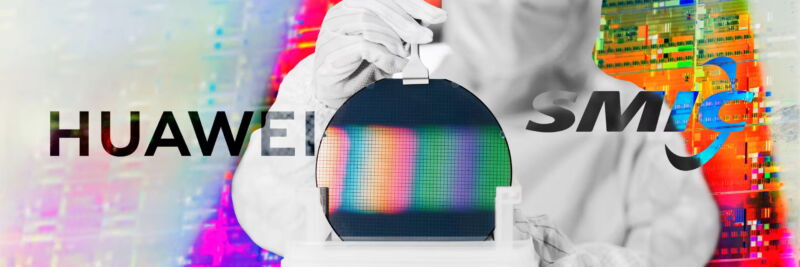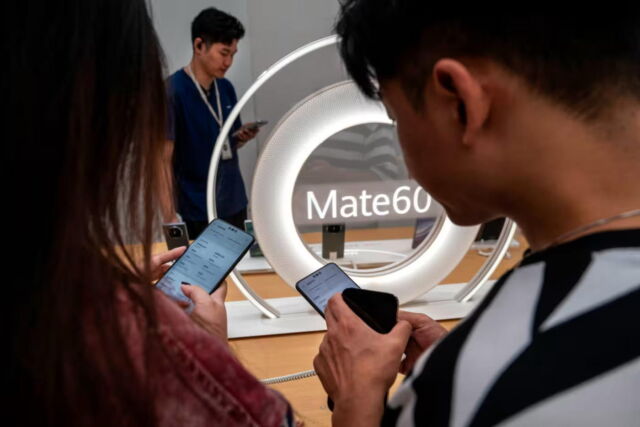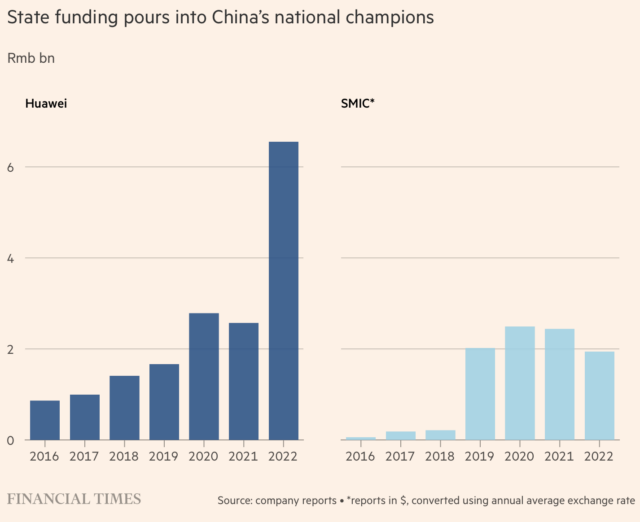
In late 2020, Huawei was fighting for its survival as a mobile phone maker.
A few months earlier, the Trump administration had hit the Chinese company with crippling sanctions, cutting it off from global semiconductor supply chains.
The sanctions prevented anyone without a permit from making the chips Huawei designed, and the company was struggling to procure new chips to launch more advanced handsets.
In response, Huawei decided to bet its $67 billion chip and mobile business on a tricky deal with the Semiconductor Manufacturing International Corporation, a state-backed foundry known for its ambition to catch up with the leading global chipmakers.
SMIC was advertising that it had found a way to produce more advanced chips using dated equipment. It would take longer than Huawei’s previous supplier, Taiwan Semiconductor Manufacturing Company, it would cost more, and it might not work. But it was a chance. Huawei contacted SMIC to make a new smartphone “system on a chip,” codenamed Charlotte.
The odds were stacked against the two companies. In December 2020, SMIC joined Huawei on the US sanctions list—meaning any company wanting to sell technology to SMIC would require Washington’s permission.

To build Charlotte, SMIC would have to grapple with an advanced process it was not familiar with and new restrictions on acquiring and managing complex equipment. One chip company executive close to SMIC likened it to “measuring an elephant in the dark.”
Yet nearly three years later, in August 2023, a new Huawei device was quietly unveiled to the public: the Mate 60 series phone, powered by Charlotte—now known as the Kirin 9000S chip.
Despite the obstacles, the Kirin 9000S offered performance comparable to 1- or 2-year-old chips from Qualcomm, according to various testing teams.
The Mate 60 flew off the shelves in China, and the return of Huawei chips following years of sanctions was enthusiastically applauded by nationalists and tech fans.
In the US, confusion reigned about how Huawei had overcome sanctions to produce the chips. Jake Sullivan, US national security adviser, said that America needed to get “more information” about the Kirin 9000S.
“Perhaps the most surprising fact about the Huawei breakthrough is that so many US government leaders were evidently surprised,” Gregory Allen, director of Wadhwani Center for AI and Advanced Technologies, wrote in an in-depth report about Huawei’s new phone.
Neither Huawei nor SMIC have given any hint as to how they accomplished the feat. But interviews with dozens of industry insiders and experts offer the closest look yet at how the companies threw vast resources at the project, with the support of the Chinese state, to maintain market share—and have now opened the door to advances in cutting-edge AI chip production.

Whether they can maintain this momentum will determine whether China can sustain its semiconductor industry and attain global technological supremacy amid ongoing geopolitical challenges. Is the Kirin 9000S proof that the country can still compete against its rivals, despite the sanctions? Or did the companies simply capture lightning in a bottle?
Most of the sources who spoke to the FT asked to stay unnamed due to the sensitivity of the semiconductor industry.
reader comments
197